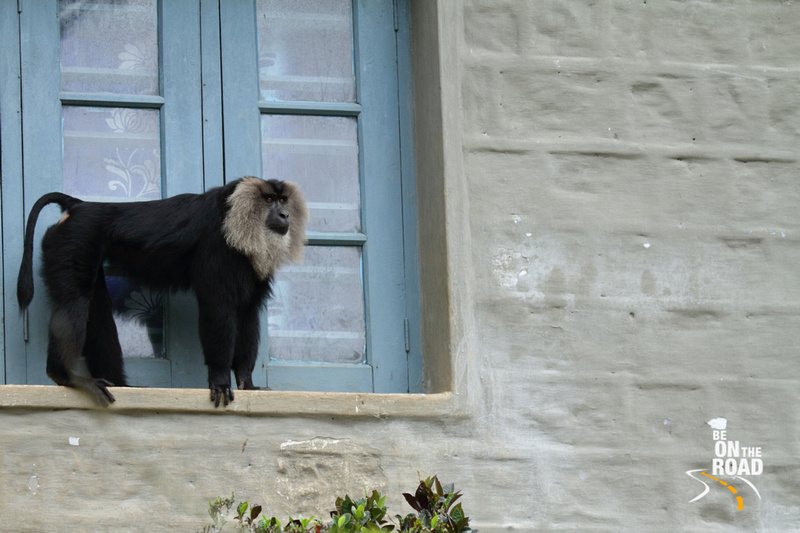
This endangered primate is an old world monkey endemic to the Western Ghats of India. They are found exclusively in the Western Ghats mountains of Southwestern India in the upper canopy of tropical evergreen and monsoon forests. Also known as wanderoos, they are known for their striking silver mane and lion-like tail tufts. They play an extremely important role in seed dispersal. By transporting fruit in their cheek pouches and consuming long distances from where they were gathered, they drop or defecate seeds far from the mother plant and contribute to the survival and propagation of many plant species in their environment. I am talking about the extremely social lion tailed macaque.
One of the best places to see them up close in the wild is Puthuthottam estate, a hidden gem located in the buffer zone of the Anaimalai Tiger Reserve near Valparai in Tamil Nadu. I bring to you this wild photo series of the lion tailed macaque from inside Puthuthottam Estate. It is here that the lion tailed macaques are more trusting of us humans and they often leave their arboreal behaviour and come to the ground.
Above photo: This alpha lion tailed macaque keeps a keen eye out for any threats. Like other macaque species, the lion tailed macaques are also very cunning and often steal food from the homes of locals.

Above photo: We humans have caught the attention of these two female lion tail macaques and they seem to be tracking our every move. These lion tailed macaques are the pride of the Western Ghats.

Above photo: Their greyish silver mane and their black coat is their main identifying feature. However, they get their name from their lion like tufts at the bottom of their tails.

Above photo: Lion tailed macaques are primarily fruit eating primates. They are fond of jackfruits and wild durian. When they don’t find fruits, they will also eat leaves, flowers and invertebrates. They play a crucial role in seed dispersal in their habitat.

Above photo: Male lion tailed macaques often stay alone in their group or they remain part of bachelor groups. This big one in picture is an alpha and heads a group of about 30 lion tailed macaques.

Above photo: Female lion tailed macaques are smaller in size than the males. They usually stay in the company of other females within the group and produce one offspring every couple of years. The young are nurtured by their mothers until they reach puberty.

Above photo: Lion tailed macaques spend half the day foraging and the other half resting of traveling to find areas to forage. They usually have a set territory within which they forage. After foraging, they usually rest on the higher branches of trees.

Above photo: Lion tailed macaques are social creatures that roam in troops of 25 to 30 with a single dominant male. In Puthuthottam estate, lion tailed macaques troops of even 100 members have been spotted quite regularly.

Above photo: Lion tailed macaques are very intelligent and resourceful. For example, they use leaves to remove poisonous stingers from chrysalises before eating them. They also use forest litter to extract water from tree holes.
Travel blog of an Indian traveler living his dream of experiencing the world and inspiring others to live their travel dream. Focus areas are travel and visa tips, destination guides, experiential travel stories and traveling as a vegetarian.